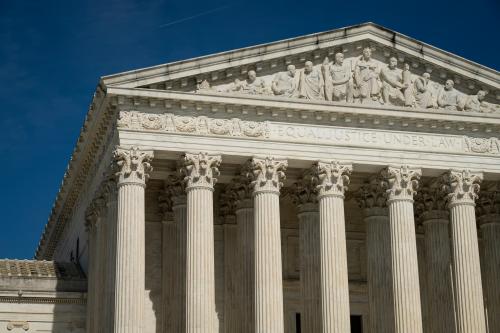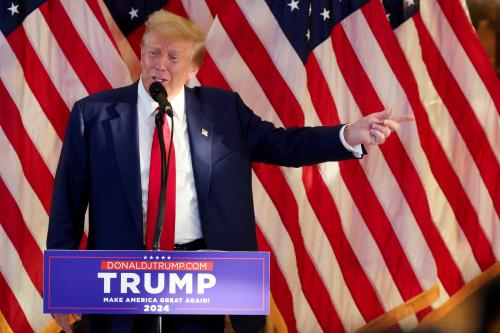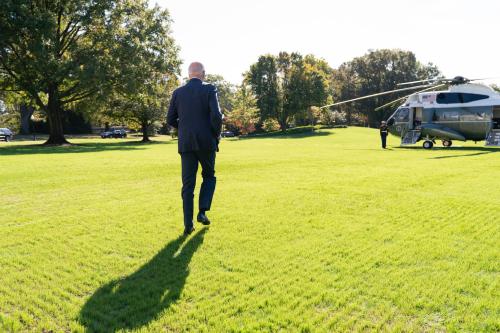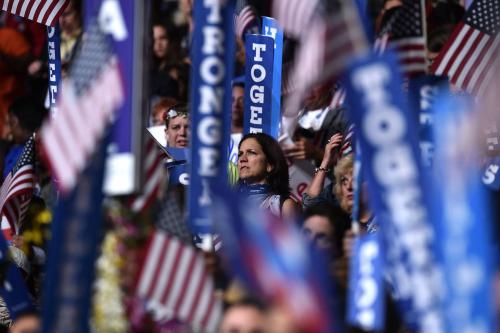In choosing Senator J.D. Vance from Ohio to be his running mate, Donald Trump chose someone who would reinforce his hard-right agenda. Vance came to national prominence as the author of the best-selling book “Hillbilly Elegy,” a book about the difficulty of growing up in poverty. In 2016, he had scathing things to say about Trump, but by 2022, when he ran for the Senate, he got solidly behind Trump, got his endorsement, and won the seat.
Since then, he has been a loyal messenger to the Trump base. He said the 2020 election was “stolen,” he referred to the hush money trial as a “sham,” he called people arrested for participating in the Capitol attack “political prisoners,” he said Trump should be immune from criminal prosecution, he blamed the Trump assassination attempt on the Biden campaign’s messaging, and he said that if he had been vice president on January 6 he would not have certified the election results. On other issues, Vance insinuated that Biden and the Democrats are intentionally poisoning middle Americans with fentanyl to take revenge on GOP voters; he said Trump ought to fire all the bureaucrats and replace them with MAGA types, and in a 2023 tweet, Vance wrote, “my education policy is that we should stop funding institutions that teach American kids to support terrorist killers…”
What Trump did in choosing Vance was to choose a younger, more handsome, and more articulate version of himself—he was reinforcing his message.
In choosing a vice president, presidential candidates have several models to choose from—some newer than others. For much of American history, vice presidents were chosen to “balance” the ticket. The balance in question could be geographic—a Northern presidential candidate—John F. Kennedy of Massachusetts picked a Southerner, Lyndon B. Johnson. The balance could be ideological as well as geographic—Governor Jimmy Carter, a Southern conservative, picked Walter Mondale, a Northern liberal; Senator Bob Dole picked conservative Congressman Jack Kemp to woo the tax-cutting supply-side faction of the Republican Party. Sometimes, as with Carter and Mondale, these marriages of convenience worked. But often, they did not. All too often, the dynamic between the president and vice president ran the gamut from cold and distantly cordial to outright hostile. The result was vice presidents who were cut out of the action, relegated to trivial duties, or dispatched to attend funerals in foreign countries or to take part in other, largely ceremonial roles.
When balance was the criterion for selection, it all but guaranteed that the office itself would be pretty uneventful. Formerly powerful senators suffered this fate. Harry Truman became a power in the Senate by taking on profiteering by defense contractors as America got ready for World War II. He gave up that key position for the vice presidency, a role in which he was kept so far out of the loop that he didn’t even know about the project to build the atom bomb until President Roosevelt died and Truman himself became president. Lyndon Johnson, the powerful Majority Leader of the Senate, found himself suffering one slight after another at the hands of Attorney General Bobby Kennedy, the younger brother of the president.
The balance model was driven primarily by electoral necessity. In the days before the primaries settled the nomination and delegates to the conventions made the decisions, there were often multiple candidates and sometimes even multiple ballots. To get more than 50% of the vote, the front-running candidate in a convention often had to cut a deal with the next strongest candidate, with the incentive being the vice presidency. But, in the past few decades, the balancing model has given way to a second model.
A new model of the vice presidency was born on July 9, 1992, when Bill Clinton called Al Gore at his home in Tennessee and asked him to join the ticket. There wasn’t even a whiff of balance about the Clinton-Gore ticket. Like Clinton, (age 45 at the time of the Democratic National Convention), Gore was also young (age 44). Like Clinton, Gore was a Southerner with an Ivy League pedigree. Like Clinton, Gore came from the more conservative wing of the Democratic Party that had recently morphed into the New Democrat movement. Some headlines from July 1992 tell the story: “Gore is a smart echo of the guy who chose him;”1 “Clinton Picks Gore as Running Mate in Break with Tradition: Democrats: Arkansas governor rejects geographical balance in choosing the Tennessee senator. Strategists believe his moderate positions can help unite divided party.”2
All through Clinton’s long and drama-filled race for the nomination, the assumption of the political class had been that New York Governor Mario Cuomo would be chosen as his VP. The preoccupation with Cuomo was obvious—he fit the traditional bill. He was a Northeasterner and an enthusiastic liberal, balancing out both Clinton’s southern roots and his New Democrat ideology that, in many ways, was a challenge to the traditional liberal base of the party. In the old style of picking a vice president, Cuomo was a shoo-in, so much so that in the summer of 1992, sitting Vice President Dan Quayle publicly asserted that he was ready to do combat with Cuomo.
But Clinton surprised everyone. His choice of Gore stemmed from how Clinton had doped out the presidential race. Reinforcing his message was more important than balancing the ticket. In Clinton’s biography, he states:
His [Gore’s] selection defied the conventional wisdom that the vice-presidential candidates should provide political and geographic balance: We were from neighboring states. He was even younger than I was. And he, too, was identified with the New Democrat wing of the party. I believed his selection would work precisely because it didn’t have the traditional kind of balance.3
The reinforcing model has been popular ever since for its two major advantages over the balancing model: it helps a candidate run and it helps a candidate govern. In this highly polarized political world—voters want to know what the candidate stands for. A “balanced” ticket confuses the voters. If Bill Clinton had chosen Mario Cuomo as his vice president, people who were attracted to him for his centrist approach to politics would have wondered if it was all a sham when an old-fashioned liberal was placed on the ballot with him.
When it comes to government, the “reinforcing model” has even more advantages. When presidents or presidential candidates chose a candidate that balanced the ticket, they were usually choosing someone with who they didn’t completely agree. No wonder that history is littered with pairs of leaders who were often not on the same page when it came to governing. If a vice president is chosen to “reinforce” the message of the presidential candidate, the vice president can be a genuine help to the president.
It was only when the reinforcing model came into vogue that the Office of the Vice President developed its own importance and influence, beginning with Al Gore and increasing with Dick Cheney. It is not an exaggeration to say that these two probably exerted more influence on policy than all prior vice presidents combined.
The partnership model has been the norm in every vice presidency since Gore’s selection.
Unlike the fictional Selina Meyer from the TV show “Veep,” who wandered into her secretary’s office several times a day to ask if the President had called—(he hadn’t)—Presidents Clinton, Bush, Obama, and Trump did call their VPs and had regular meetings with them. They also delegated substantial power to their VP and treated their vice-presidential projects as presidential projects.
What made this change possible was not so much the personal characteristics of Gore or Cheney—although they both were powerful and experienced men. What changed the relationship between presidents and their vice presidents has its roots in the nomination process. Changes in the nomination process itself have diminished the importance of balance on the ticket and increased the importance of reinforcing the message.
Trump has made an effective choice in Senator Vance. Vance will not only reinforce Trump’s core messages, but also he will be trustworthy as a vice president—something critically important when the president is elderly—Trump is 78. The prospect of a young and perhaps not quite as shambolic Trump is what excited Republicans when Governor DeSantis got into the race—although voters quickly decided he was not a replacement for Trump. But Vance will delight the MAGA base, help an aging president actually get things done, and carry on the fight in very effective ways. Democrats, already worried about the weaknesses of their ticket, will be hitting the panic button as the Trump-Vance ticket continues to gain steam.
-
Footnotes
- Hotline, July 9, 1992.
- David Lauter, “Clinton Picks Gore as Running Mate in Break with Tradition,” Los Angeles Times, www. latimes.com/archives/la-xpm-1992-07-10-mn-1845-story.html.
- Bill Clinton, My Life (New York: Alfred A. Knopf, 2004), p. 414.





Commentary
Trump chose Vance to reinforce his message
July 16, 2024